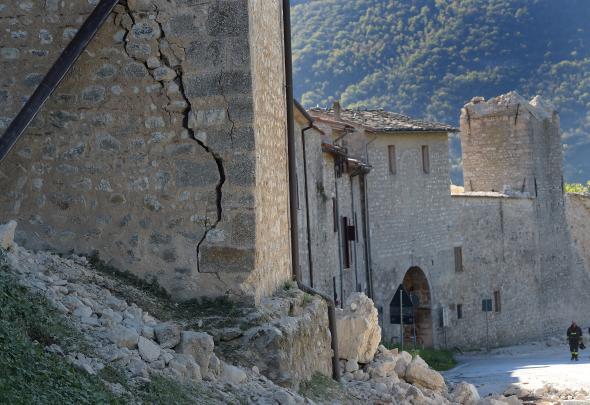The earthquake at about 7:40am local time was centered near Norcia, Italy, a town in the Perugia region about 150 kilometers northeast of Rome. Aftershocks were reported as far away as Venice. The quake brought down several buildings but no deaths were reported; many had evacuated (25,000 are now reportedly displaced) after the area experienced a foreshock of a lower magnitude.
Italy’s Prime Minister Matteo Renzi called the quake “the strongest since the Irpinia one,” a 6.9 magnitude earthquake in southern Italy in November 1980 that killed some 3,000 people.
An earthquake of a comparable magnitude (6.2) hit the region in August, killing more than 300 people.
Though the damage caused by the most recent quake is less significant than that of the August quake, the tremors could still mean disaster for the region.
The cause of the earthquakes is well known. The faults that run through Italy are moving apart at a speed of three millimeters per year. This causes insecurities in the fault, as evidenced by the recent earthquake. (Read our earthquake explainer.)
Source: National Geographic











